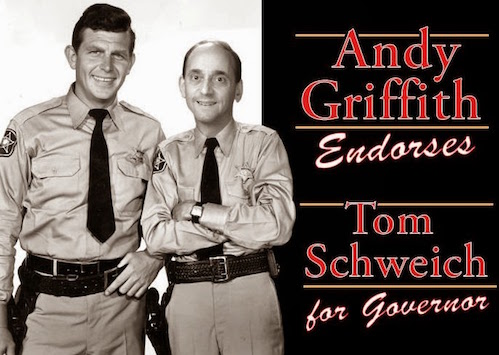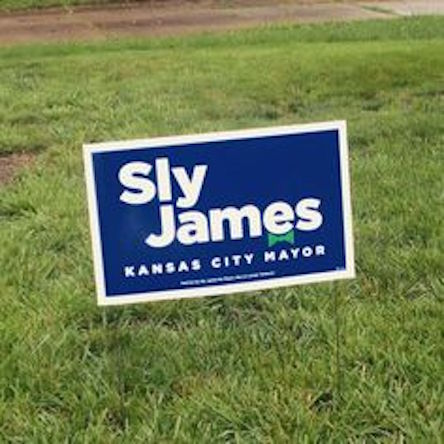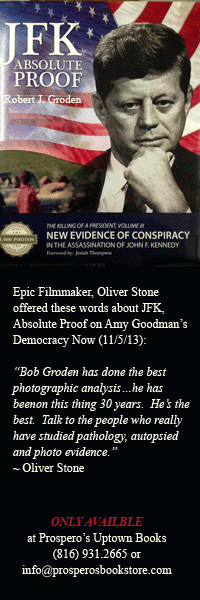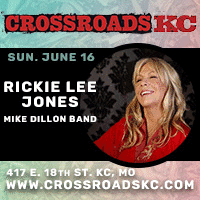 Let’s not kid one another…
Let’s not kid one another…
Major television media companies are still a great investment with their enormous holdings throughout the country.
Sure there are ongoing signs of diminishing returns for TV stations as other delivery systems make inroads on local affiliates.
But don’t feel sorry for these mega TV operators. They’re not going hungry—YET!
Kansas City’s television stations are no longer locally owned. That ended years ago.
Today out-of-town mega media corporations call the shots for our No. 31 ranked market.
But hats off to those TV moguls!
 When they acquired their KC properties they got more than they probably bargained for.
When they acquired their KC properties they got more than they probably bargained for.
Allow me to explain.
With the State Line running smack dab through the metroplex and greater KC’s population being pretty well distributed between the two sides, the potential for enhanced revenue is far greater.
Case in point.
Take the current Missouri political campaigns with buckets of money being spent on television in high profile races.
However the Kansas City media market is also being bombarded by ads for Kansas races.
It’s double the grim political onslaught (aren’t we fortunate).
Well, maybe it’s not lucky for us but it represents a windfall for Kansas City TV stations that are benefiting from a huge over-dose of political ads here.
I saw a commercial break last night that featured—count ’em—FOUR political commercials in just ONE spot set!
So hats off to those Cincinnati, New York, Chicago and Des Moines based board rooms. Their KC properties are really making budget this political season.
One more observation.
Political TV ads have to be sold to candidates and campaigns at the lowest going rate available on the particular station’s rate card – that’s the law.
But is that always the case?
According to a media source, “There are always ways around it.”
Say a giant local retailer with heavy annual ad budgets pays a given rate for a 10:00 p.m. spot in the news. Sorry, no discount.
So the political ad would sell for the same dollar amount then?
Answer: It should—and it DOES!
And there always seem to be magical ways for a TV station’s sales department to “make it up to the big local advertiser in other ways.”
I’m not suggesting they’re fibbing, but my source tells me it’s becoming a more and more common practice these days.
(Free bonus spots and schedules anyone?)
In the meantime sit back and enjoy the best (or worst) of political ads from BOTH sides of the border. Our out-of-town/state TV moguls sure do……..










A little clarity Jack: From http://www.mediaaudit.com/media-watchdog/political-advertising-rules-in-local-tv-buying-6-common-misconceptions/
“Stations are required to accept political advertising.”
The rules for political advertising require that stations must accept ads from candidates for Federal offices. Stations do not have to accept state or local candidates’ advertising.
However, if the station decides to accept advertising from a local candidate or a statewide candidate they should be prepared to accept it from that candidate’s opponent (whether from the same party in a primary or a different party in a general election).
In many cases they choose to take political because of the revenue windfall that it can provide to the station, rather than because they are required to do so.
“Candidates always get the lowest rates for their commercial time.”
Federal candidates are entitled to the lowest rates in the “class” of time they purchase. When stations choose to accept advertising from local and statewide candidates, they tend to also apply the same consideration.
The way that this works is a little complicated, but it’s important for local TV advertisers to understand.
As an example, a station has a published political rate card that offers three “classes” of time for the Late News day part, based on likelihood of preemption (the station’s ability to bump the buyer’s spot for another higher-paying advertiser):
Section 1: fixed non pre-emptible – $1,125
Section 2: pre-emptible with prior notification – $750
Section 3: immediately pre-emptible – $500
If a station is sold out with regular advertisers in Section 3 (lowest cost, most pre-emptible status), the station can charge the candidate Section 2 in order to clear the order and pre-empt another advertiser (or political) who had purchased as Section 3.
If the station has inventory available, then the candidate can order at Section 3 and be cleared. Here’s the kicker: if the station has an advertiser paying $450 for the news the candidate is entitled to the $450 rate, because it’s the LUR (lowest unit rate). In this example a station will code any rate from $1 to $749 as a Section 3. So, whatever rate on the books is the lowest for that Section is the rate that the candidate is entitled to pay – if the station has inventory to sell. Normally, a station tries to publish a political rate card whereby Section 3 and the LUR are the same.
One other important qualification regarding the “lowest rate” regulation: Political candidates are entitled to the lowest unit rate in the class of time they are purchasing (Section 1, 2 or 3) in political protection periods only. These are 45 days prior to a primary and 60 days prior to a general election.
3. “Political ads can’t be preempted a by other advertisers.”
This simply isn’t true.
In the above scenario, let’s say the qualifying political candidate has purchased the Late News at $450 and is coded in the station’s system at Section 3. A local carpet store has to get on the air and is willing to pay $750 (Section 2 – or the next highest “class”) in order to run. In this case, the candidate can be preempted.
Conversely, the political candidate will likely not be preempted for another advertiser in the same “class” (so for $450 from another advertiser, the station will normally avoid preempting the candidate).
Frankly, all else being equal, stations tend not to want to preempt political schedules, and it is generally easier to preempt non-political ads, because advertisers and agencies tend to accept the explanation that “sorry, it’s for a political ad” and that they didn’t have much of a choice in being preempted.
4. “Political Action Committees (PAC’s) and party committees are given the same consideration as candidates.”
Again, this is absolutely a misnomer.
PAC’s and party committees are not covered by any lowest unit rate or pre-emptibility rules or considerations.
In recent past election cycles, stations would charge as high a rate as possible to these entities, and these PAC’s and party committee dollars became considerable revenue enhancers for stations.
Recently, they have started to negotiate with stations much like regular advertisers (trying to secure the lowest rates possible) but they are not covered by any lowest unit rate guarantees and are subject to preemption.
Interesting that PAC ads aren’t covered by some of these lowest rate/non-preemption provisions.
Thanks for sharing.
Actually it appears there are fewer ads on TV and radio this year. Not many yards sign either in my neighborhood — although I’ve been some parts of the metro heavily trashed with them.
Probably the most amazing thing is the lack of Clinton/Kaine signs. Are Clinton fans embarrassed to post a sign on their lawn?
I’ve only seen one kansas race advertised on TV. Lots of kander, koster, and Blunt ads — but where is Grieten? Is he only advertising in STL?
One other question — Will Clinton ever run a positive ad?
That’s not what I’m hearing from my TV source.
According to h**, the Brinks truck is loading up at their station’s dock practically every night.